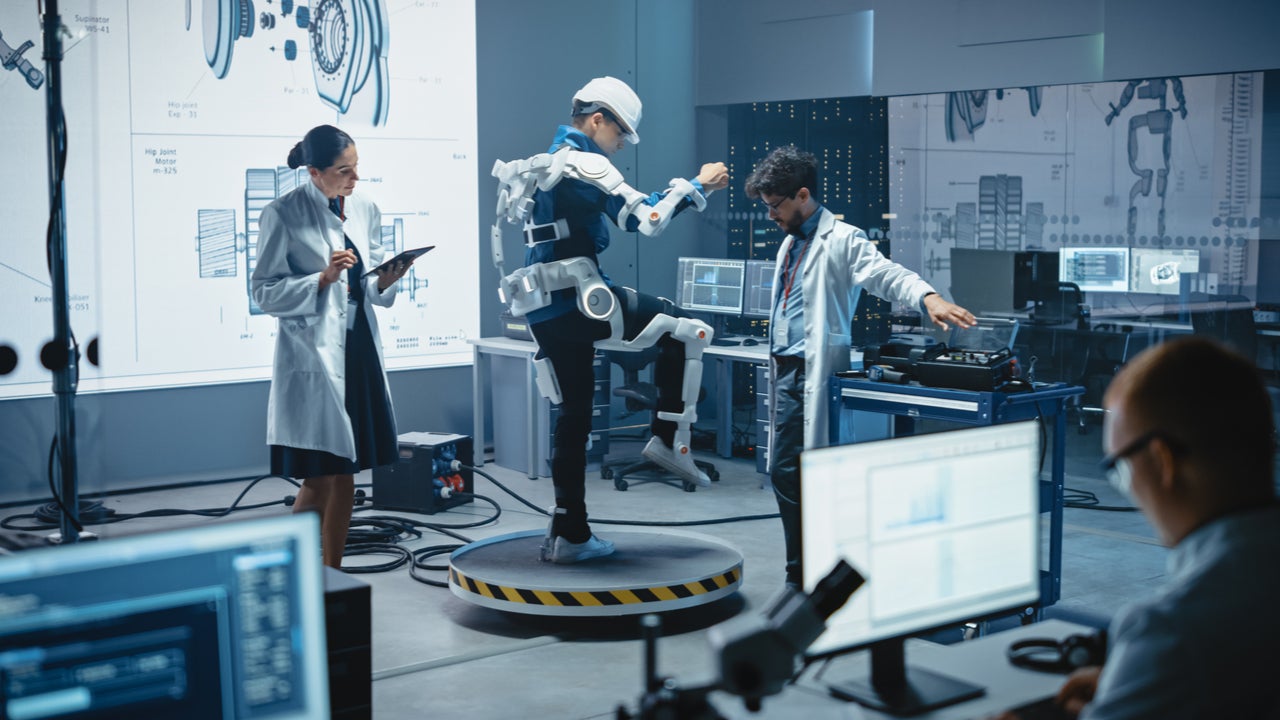Wearable devices are able to capture vital statistics of the field workforce and monitor health conditions and transmit these to command centres in real-time.
Technology Trends
Listed below are the key technology trends impacting the global wearable tech industry, as identified by GlobalData.
How well do you really know your competitors?
Access the most comprehensive Company Profiles on the market, powered by GlobalData. Save hours of research. Gain competitive edge.

Thank you!
Your download email will arrive shortly
Not ready to buy yet? Download a free sample
We are confident about the unique quality of our Company Profiles. However, we want you to make the most beneficial decision for your business, so we offer a free sample that you can download by submitting the below form
By GlobalDataSmartwatch is king
Smartwatches accounted for nearly 60% of the overall wearables market, according to GlobalData figures. The growing inclination of consumers to access smartphone-like features from a watch remains the primary growth driver. Supplementing this factor, technological improvements such as seamless body integration, health and fitness information accessibility, and modular aesthetics are key growth stimulants for smartwatches’ adoption.
Custom silicon drives smartwatches
While it is known that the smartphone component ecosystem played a critical role in getting the first wearables to market, the next wave of innovation is being driven by purpose-built silicon. Not only is Apple building unique processors and sensors into the Apple Watch, but the company is also using its own chips for implementation of Bluetooth in AirPod wireless headphones. Vendors that cannot compete with Apple directly for smartwatch processors are turning to Qualcomm.
Fitness trackers are losing out to smartwatches
The shrinking popularity of fitness trackers in mature markets can be attributed to the rapid replication of their unique selling propositions (USPs) in smartwatches. Overshadowing fitness trackers’ USPs, such as step counts, calorie burns, sleeping pattern, distance walked/run, etc., smartwatches now offer improved stats—for example ECG, non-invasive glucose monitoring, and fall detection—and social connectivity.
Smart glasses are pacing up commercially
Eyewear is getting smarter, all thanks to augmented reality (AR) and virtual reality (VR). Continuous investment from tech giants to develop and utilise AR and VR beyond the known areas of application, coupled with surging demand from enterprises, is propelling the growth of smart glasses. From first-person imaging to enhanced turn-wise directions, facial recognition, and health-sensing, AR is driving the penetration of smart glasses into multiple areas of the internet-connected society.
Hearables are getting smarter
Ear-worn devices are one of the first wearable technologies developed to enhance hearing. The dramatic surge in interest for combining hearing aids with entertainment attributes resulted in the inception of smart ear-wear, or “hearables,” over the past three to four years. While the market remains in the early adoption phase, hearables offer infinite possibilities in the areas of healthcare and fitness.
Smart clothing to gain popularity
According to a World Economic Forum (WEF) survey, 92.1% of corporate leaders believe that 10% of people will wear internet-connected garments by 2025. The market for smart clothing is in the initial experimental stages with few products, including NadiX yoga leggings, Sensoria socks, Ambiotex smart shirts, and Supa Bras, available commercially. The slow yet growing popularity of these products reflects a nascent demand for fitness-focused, sensor-embedded, and internet-connected clothing from the mass market.
Skin patches
As digital capabilities have improved, skin patches have evolved to facilitate more complex functions while being thin and flexible from being manufactured using nanomaterials, flexible electronic technologies, and sensors. Consequently, the definition of “skin adhesive patches” is broadening to include smart technologies allowing connectivity with IoT devices. GlobalData expects that miniaturisation and lowered costs of development will create a surge for wearable sensors in healthcare.
Disease-orientated devices
Medical devices are one of the fastest growing areas within life sciences. The industry is being driven to ensure greater inclusion of patients and consumers during the design and development processes. Without developers understanding real-world needs, consumers are unlikely to use the end product. Consequently, medical device companies are shifting their interest from device/consumable providers to disease/care management organisations.
AI and ML in wearables
AI is becoming a common feature across connected devices. In healthcare, it is enabling doctors to perform robotic surgery with precision, reducing the risk of post-surgery complications, and allowing surgeons to use AR and VR during surgical procedures and training exercises. Start-ups lead in the space, equipping their wearables with AI-powered customised intelligent assistants that are mostly task-specific.
Cloud solutions and wearables
The association of cloud solutions and wearables is being driven by a combination of the surging amounts of wearables data, limited onboard storage, restricted processing capabilities, and security concerns. Meanwhile, the evolution of wearables from consumer-focused devices into enterprise necessities is being driven by the need for real-time data access and computation. In the long run, wearable-cloud setups will gain more prominence, while in the short term it only benefits consumers and healthcare enterprises.
5G – a key influence on wearables
GlobalData sees 5G as a potential game-changer for wearables at both the development and adoption stages. The low latency and ultra-high reliability of 5G technologies are set to aid wearable designers in reducing the focus on storage capacity and processing power. Similarly, at the adoption level, by leveraging its high bandwidth feature, 5G promises enhanced mobility, flexibility, and agility to consumers with self-contained wearables.
Moore’s law applies to wearables
As computing power and connectivity increase and the prices decline, designers can place sensors, processors, and displays in a more creative and valuable manner. The caveat is that this advanced cheap computing still requires electrical power, and battery technology is not advancing at the same pace. Due to variables of fashion and fatigue, wearables are even more limited by power consumption than devices that live in pockets or bags, which can be somewhat larger to accommodate bigger batteries.
Sensors hold paramount importance
Wearable devices being shipped today incorporate an average of 4.1 sensor elements compared to just 1.4 in 2013. Established sensors such as hearing aids, global positioning systems (GPS), and thermometers are evolving, while newer wearables made with microelectronic mechanical sensors (MEMS) enable more advanced functionalities. As sensors evolve, their long-term stability, resiliency, and biocompatibility will improve, as well as their size, functionality, and portability.
Smart implants to grow in popularity
Smart implants are converting science fiction into reality by promising a wide range of benefits in remote monitoring, while being low maintenance and seamless. Smart implants are being used in various parts of the body, with inserted chips measuring hormones and pH levels, blood glucose concentration, bacterial activities, electrical activities, and temperature, and even postoperative complications and rehabilitation, all the while gaining real-time biofeedback.
Wearables and Bluetooth low-energy controllers
Wearables are primarily communication devices and their need for an improved power supply is paramount. Owing to the limited hardware space, wearable original equipment manufacturers (OEMs) are constantly on the lookout for miniaturised and powerful communication protocols that can operate on ultra-low power. The development of Systemon-Chip (SoC)-based Bluetooth Low-Energy (BLE) controllers is enabling OEMs to enhance power support to the devices, as well as to minimise device sizes and system cost.
This is an edited extract from the Wearable Technology in Mining – Thematic Research report produced by GlobalData Thematic Research.











Related Company Profiles
World Economic Forum LLC
ambiotex GmbH
Qualcomm Inc
Apple Inc